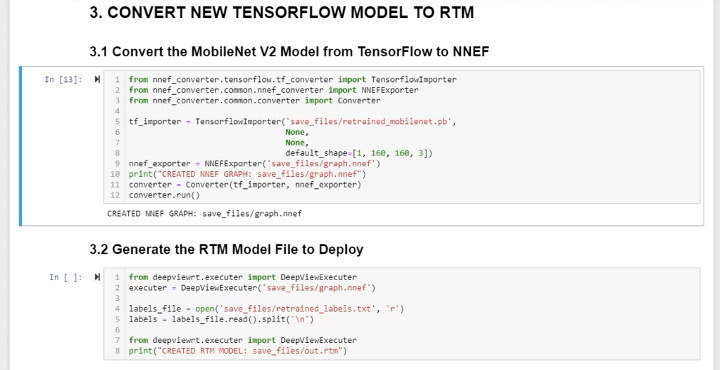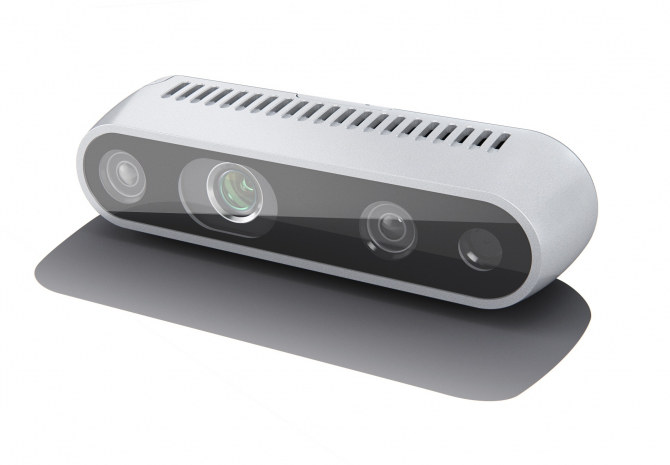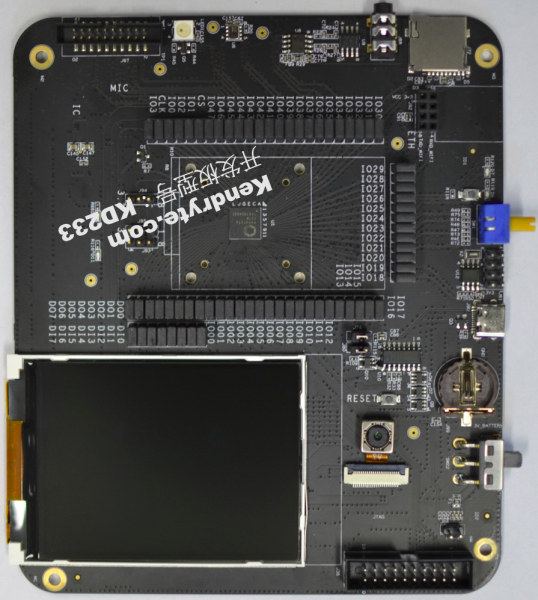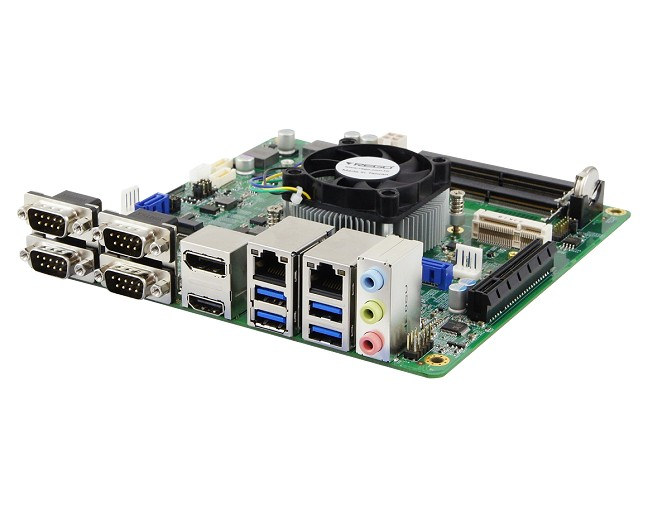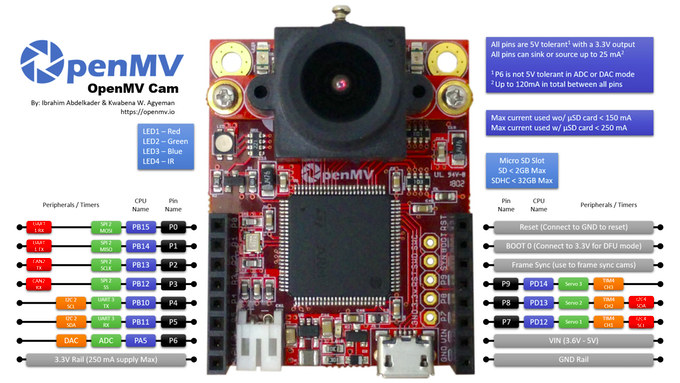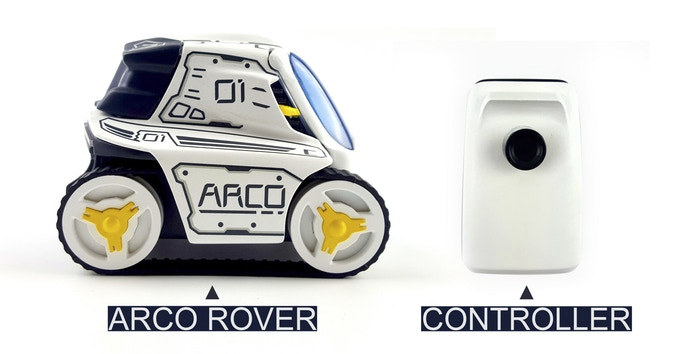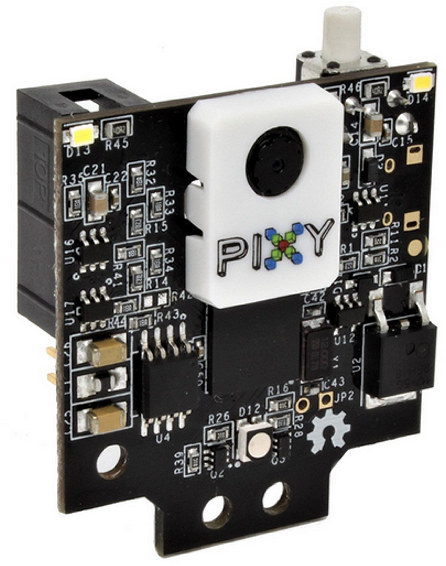CNXSoft: This is a guest post by Greg Lytle, V.P. Engineering, Au-Zone Technologies. Au-Zone Technologies is part of the Toradex Partner Network. Object detection and classification on a low-power Arm SoC Machine learning techniques have proven to be very effective for a wide range of image processing and classification tasks. While many embedded IoT systems deployed to date have leveraged connected cloud-based resources for machine learning, there is a growing trend to implement this processing at the edge. Selecting the appropriate system components and tools to implement this image processing at the edge lowers the effort, time, and risk of these designs. This is illustrated with an example implementation that detects and classifies different pasta types on a moving conveyor belt. Example Use Case For this example, we will consider the problem of detecting and classifying different objects on a conveyor belt. We have selected commercial pasta as an example […]
Intel RealSense Tracking Camera T265 is Designed for Autonomous Devices
Intel has just launched another smart camera with RealSense Tracking Camera T265 powered by the company’s Myriad 2 VPU (Vision Processing Unit) also found in the first Neural Compute Stick, and designed for autonomous robots, drones, and augmented/virtual reality applications. The T265 camera is said to use proprietary visual inertial odometry simultaneous localization and mapping (V-SLAM) technology “delivering high-performance guidance and navigation”. Intel RealSense tracking camera T265 hardware specifications: VPU – Intel Movidius Myriad 2 vision processing unit with 12 VLIW 128-bit vector SHAVE processors optimized to run V‑SLAM at low power Cameras – 2x Omnivision OV9282 high-speed image sensors with Fisheye lenses for a combined 163±5° FOV; infrared cut filter Sensor – Bosch BMI055 6-axis IMU (Inertial Measurement Unit) to measure rotation and acceleration of the device USB – 1x USB 3.1 Gen 1 Micro B port to transfer pose data, or pose + image data. Dimensions – 108 x 24.5 x 12.5 mm; 2x […]
Intel RealSense D435i Stereo Depth Camera Supports 6 Degrees of Freedom Tracking
First unveiled in CES 2014, Intel RealSense Technology was introduced for perceptual computing application with hardware such as 3D sensing cameras, as well Nuance Dragon Assistant voice technology. Since then the company release various 3D sensing camera models and kits such as Realsense R200 Depth Camera robotics development kit, and just announced the new RealSense D435i stereo depth camera which adds 6 DoF (Degrees of Freedom) tracking over D435 model thanks to an inertial measurement unit (IMU). Intel RealSense Depth Camera D435i key features and specifications: Intel RealSense Vision Processor D4 – Purpose-built ASIC designed to deliver stereo depth data at up to 90fps at VGA resolutions or up to 1280×720 resolution at 30fps Intel RealSense module D430 – Depth camera imaging sub-system featuring a wide field of view (91.2 horizontal x 65.5 degrees vertical), global shutter stereo image sensors and an IR projector Depth Technology – Active IR stereo […]
$50 Kendryte KD233 Board Features K210 Dual Core RISC-V SoC
RISC-V is talked about a lot, and we’re started to see a few development boards coming to market, or at least being announced with some based on SiFive processors such as HiFive Unleashed or Arduino Cinque, as well as other like GAPUINO GAP8 for low power A.I. applications. The Arduino board is not for sale yet, and HiFive Unleashed and GAPUINO GAP8 are fairly expensive at $999 and $229. Kendryte KD233 board is another RISC-V development board, based on Kendryte K210 dual core 64-bit RISC-V processor designed for machine vision and “machine hearing”. The board goes for $49.99 on AnalogLamb. Kendryte KD233 board specifications: SoC – Kendryte K210 dual core 64-bit RISC-V processor, KPU Convolutional Neural Network (CNN) hardware accelerator, APU audio hardware accelerator, 6MiB of on-chip general-purpose SRAM memory and 2MiB of on-chip AI SRAM memory, AXI ROM to load user program from SPI flash Storage – 128 Mbit […]
iBASE Introduces MI988 Ryzen Embedded V1000 Mini-ITX Motherboard
iBASE has recently announced the MI988 Mini-ITX motherboard based on the latest AMD Ryzen Embedded V1000 processor family. The motherboard is equipped with two DDR4-2666 SO-DIMM slots that support up to 32GB ECC memory, M.2 NVMEe storage (NVMe), two Gigabit Ethernet ports, and various display options. iBASE MI988 motherboard specifications: SoC – AMD Ryzen Embedded V1000 processor with AMD Radeon Vega GPU System Memory – 2x DDR4-2666 SO-DIMM, supports ECC, up to 32GB Storage – 1x M.2 SSD (NVMe), 2x SATA III Display Interfaces 1x HDMI 2.0a, 1x DisplayPort 1.4 1x eDP or 1x 24-bit dual channel LVDS Audio – Built-in HD audio w/ALC662 codec for 5.1 channel; 3x 3.5mm audio jacks Connectivity – 2x RJ45 Gigabit Ethernet connectors via 2x Intel I211AT USB – 2x USB 3.1 Gen2 (10Gbps) on board, 2x USB 3.1 Gen1 (5Gbps) on board Serial – 2x RS232/422/485 (Jumperless selection), 4x RS232 Expansion Slots 1x […]
OpenMV Cam H7 MicroPython Machine Vision Camera Launched on Kickstarter
OpenMV team has launched an upgrade to their popular OpenMV CAM M7 machine vision camera, with OpenMV CAM H7 replacing the STMicro STM32F7 micro-controller by a more powerful STM32H7 MCU clocked at up to 400 MHz. Beside having twice the processing power, the new camera board also features removable camera modules for thermal vision and global shutter support. OpenMV CAM H7 camera board specifications: MCU – STMicro STM32H743VI Arm Cortex M7 microcontroller @ up to 400 MHz with 1MB RAM, 2MB flash. External Storage – micro SD card socket supporting up to 100 Mbps read/write to record videos and store machine vision assets. Camera modules Omnivision OV7725 image sensor (default) capable of taking 640×480 8-bit Grayscale / 16-bit RGB565 images at 60 FPS when the resolution is above 320×240 and 120 FPS when it is below; 2.8mm lens on a standard M12 lens mount Optional Global Shutter camera module to capture […]
ARCO is a Real Robot that Lives in Virtual Worlds (Crowdfunding)
Hicat launched HICAT.Livera machine vision board for robotics projects on Kickstarter two year ago. The company second project is still related to robotics and machine vision, but geared towards a different target audience, as ARCO robot aims to offer an augmented reality gaming experience to kids, although it’s still hackable/customizable as we’ll see below. The hardware part is mostly comprised of ARCO ROVER robot, and a Bluetooth controller that can be stored in ARCO’s inner capsule, where it recharges and communicates with ARCO through a magnetic pogo connection joint. The listed specifications are rather limited: ARCO ROVER Bluetooth connectivity (nRF52 WiSoC) 10 RGB LEDs Battery – Good for about one hour Power Supply – Via USB type C port Dimensions – 8.9 x 7 x 6.5 cm Weight – ~180 grams Controller Bluetooth (nRF52) Sensor – 3-axis accelerometer for motion detection Trigger and rocker Battery – Good for about one […]
PIXY2 Computer Vision Camera Works with Arduino, Raspberry Pi, and Other Boards
Cameras may be used to take holiday photos, but when integrated into robotics projects there may purpose is usually to detect objects and/or patterns. We’ve previously covered specialized computer vision camera such as the Linux based JeVois camera powered by Allwinner A33 processor, HICAT.Livera machine vision board, or STMicro STM32F7 Arm Cortex M7 powered OpenMV Cam M7 open source computer vision board. Another popular option is PixyCam PIXY camera that was first launched via a Kickstarter campaign in 2013. The company has recently introduced an updated version, aptly named PIXY2, which can still detect objects – just faster at 60 fps-, and also includes new algorithms to detect and track lines or barcodes. PIXY2 camera specifications: MCU – NXP LPC4330 dual core Arm Cortex M4/M0 @ up to 204 MHz with 264KB RAM, 2MB flash Image sensor – OnSemi (previously Aptina) MT9M114 1296×976 resolution with integrated image flow processor Lens […]


